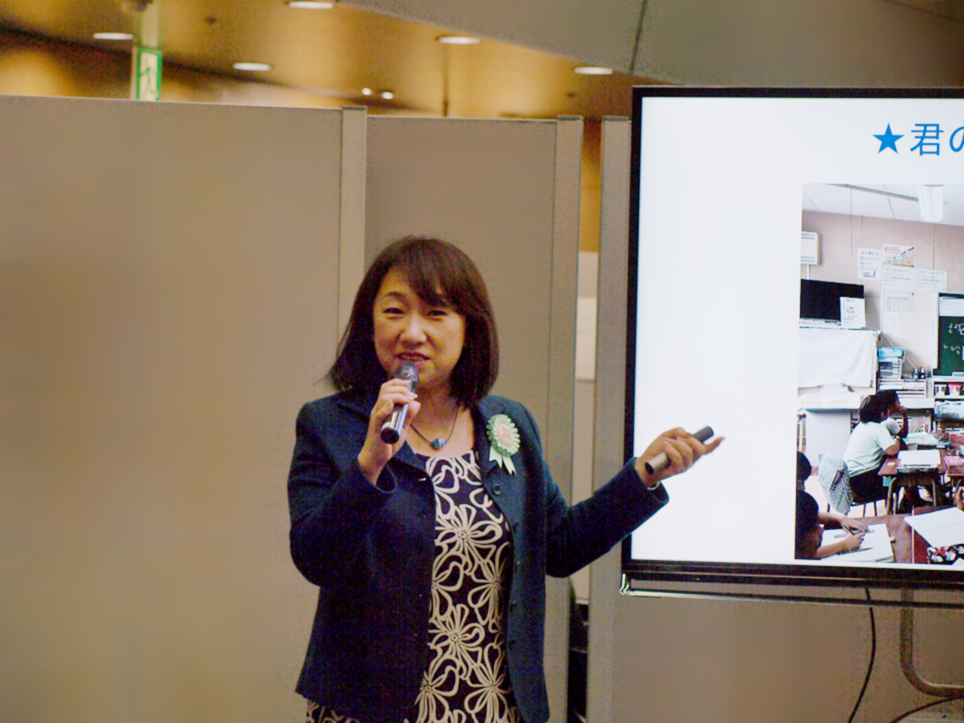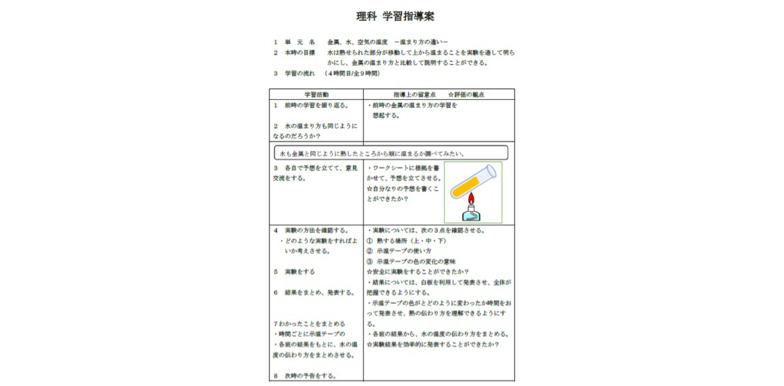Since its establishment on October 15, 2015, DENTSU SOKEN INC. Active Learning "What About This?" Research Lab has conducted unique collaborative and practical lessons with teachers at various schools nationwide. Rather than simply providing lesson content, we explored with the teachers—the education professionals—the format that would make each school and class most "active." Each time, highly original methods and compelling stories emerged. The responsible researcher reports on these sessions.
"If we add more batteries, will the current get stronger?"
Imagine this: You're an elementary school student. The bell rings, you take your seat, and science class begins. The teacher starts writing on the blackboard: "If you increase the number of batteries, will the current get stronger?"
Now then. As an elementary school student, did you feel like studying? Were you looking forward to the experiment? Did you already know the answer? Not interested? Sleepy?
This single sentence from the lesson's "goal" (*) was an impressive phrase that came up during a meeting with Principal Hiromi Shimizu of Hachioji City Nibukata Elementary School.
※ "Objective" refers to the purpose or aim of the lesson, the skills we want the children to acquire.

Principal Hiromi Shimizu, Hachioji Municipal Nibukata Elementary School
Preconceptions and biases that every teacher has
Nibukata Elementary School became our collaborative research partner one year ago. Located at the foot of Mount Takao, it might seem like a quiet, ordinary public elementary school—but it's actually quite remarkable. It's famous for its "special activities" like class meetings and cultural festivals, attracting visitors even from Egypt and Mongolia. Our joint research began with Principal Shimizu and Dentsu Inc. deciding only on one thing: "to create something unprecedented in today's schools."
To pursue this "something," meetings were held between Principal Shimizu and the school team within DENTSU SOKEN INC. Active Learning "How About This?" Lab (Ms. Tatebayashi Megumi, Mr. Moriguchi Teppei, Mr. Honda Akihiro, Mr. Ozaki Kenji, and Mr. Okuma Masashi). The clash of cultures—education versus advertising—was fascinating. We visited the base of Mount Takao repeatedly, losing track of time in conversation. As we discussed the challenges facing schools, it became clear that teachers were constrained by many assumptions, biases, and preconceptions labeled as "common sense."
"Spoiler-filled" Lessons
Principal Shimizu says, "I want to fix lessons that are correct but boring. For example, the learning objectives teachers write down at the start of class as a matter of course. 'If we increase the number of batteries, will the current get stronger?' Many teachers write questions where removing 'would it?' gives you the answer. The answer is obvious, and the kids get completely disengaged."
I see. Remove the "would it?" and you get "Adding more batteries increases the current"... It really is the answer (laughs). We dubbed this the "Spoiler Lesson."
Launching the "B-Side" Lesson Plan Project
Beyond spoiler lessons, there are various "teacher assumptions" behind what the principal called "correct but boring lessons." What if we pitted something fundamentally different—like "advertising assumptions"—against them? Might something interesting happen? Could we create something that makes adults change first, before the children? That's when we set our sights on "lesson plans."

Example of a typical "Lesson Plan." It outlines the flow of learning and key teaching points.
Lesson plans are essentially scripts for teaching, outlining a teacher's plans and considerations for a class. We decided to create a collection of secret tricks to make children more active and tips to make lessons more enjoyable, adding this to the usual lesson plan. We named it the "Lesson Plan B-Side" Project.
Teachers could use Side B to review their regular lesson plans (Side A) after creating them, allowing them to add a little extra creativity to their lessons. It could shift rigid "common sense" and preconceptions. Aiming for this kind of secret manual (?), we packed Side B with a blend of advertising communication know-how and the expertise Principal Shimizu had cultivated over many years in the educational field.
What teachers consider common sense is advertising's unconventional wisdom
For example, "Students who don't listen in class are bad students." This is one of the teacher's givens. It assumes, "Once they're seated and class starts, they should listen. They must be interested in my lesson." But advertising communication starts from a different premise. Advertising assumes people aren't interested in the product; it assumes being ignored. How do you get those people to turn their heads? That's where it begins. Applying this advertising given, the first item on the B-side lesson plan reads:

Excerpt from "Lesson Plan B."
How did the teacher and the class change with Lesson Plan B?
The revised Lesson Plan B (currently up to 7 items completed) gradually took shape by adding sections to reexamine the teacher's various "assumptions" and hints for lesson improvements.
To test its effectiveness, we had a young teacher at Nibukata Elementary School try it out. After creating their own lesson plan (A side), the teacher used the B side to review it. The B side item that surprised them the most was this one.

The B-side item designed to reexamine the teacher's assumption that "questions lead to correct answers."
The opening example, "If you add more batteries, will the current get stronger?" is a bad one, right? (laughs). That teacher was apparently thinking of asking "Is there a difference in temperature between sunny and shaded ground?" in science class. That's a total spoiler. After that, the teacher refined the question like this:
"Where is the hottest spot in the school? And where is the coolest spot?"
How about trying to see it from the perspective of an elementary school student? Doesn't that sound more exciting than being asked, "Is there a difference in ground temperature between sunny and shaded areas?"
The teacher added another twist. The lesson itself became a competitive game where groups split up to find the hottest and coolest spots. This, by the way, incorporates the "Adding Playful Elements to Lessons" approach from Side B. The day of the lesson arrived. "Where are the hottest and coolest spots in school? Let's race to the playground now! The group that finds them first wins!" When the teacher announced this, the reactions were: "But this is science class?" "We can go outside?" "We can play a game during class?"
After a moment of confusion at this unusual start to class (laugh), they energetically dashed out onto the playground and excitedly began checking sunny and shady spots one after another. According to Principal Shimizu, this became the catalyst for this teacher's daily lessons to gradually transform. Above all, the children's smiles increased during class.

The children began investigating every sunny and shady spot around the school, full of excitement.
This is the B side of the lesson plan. Other items include things like this.

An item designed to break the teacher's assumption that "the subject's unique characteristics are important."

An item designed to break the teacher's unwritten rule: "Don't waste class time on idle chatter."
Currently, at Nibukata Elementary School, various teachers are incorporating elements from the B-side lesson plans into their regular classes like math and social studies. This B-side is being enhanced so it can be used by any teacher nationwide, not just at Nibukata Elementary School.
Breaking the "norm" to embrace new approaches
Preconceptions and assumptions about what's "normal." This isn't just about teachers. In any profession, the more skilled and experienced the professional, the more likely they are to be somewhat bound by fixed ideas and common sense about "how things should be" or "how they ought to be," right?
Identify each assumption one by one → Re-examine it → Confront it with the "norms" of a different world → Break it down → Can a new approach emerge? Try it out, and something might shift slightly, or something new might be born.
Our research institute aims to be a hub, throwing strange and unconventional ideas at the "norms" currently found in schools. We hope to spark good chemical reactions, creating something that makes schools and children just a little more active. We want to meet and collaborate with teachers nationwide and professionals from different fields, while of course breaking our own assumptions too. Our goal is to increase small but new "What about this?" proposals.








